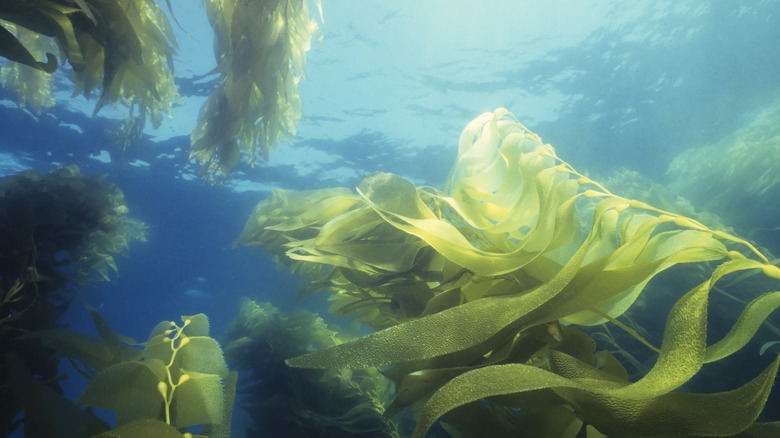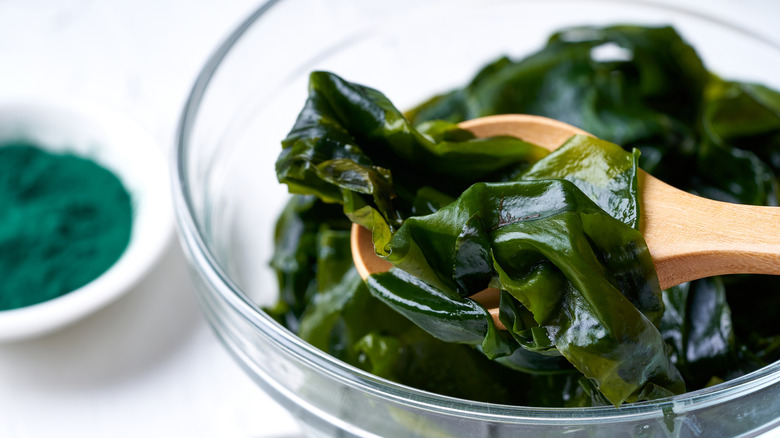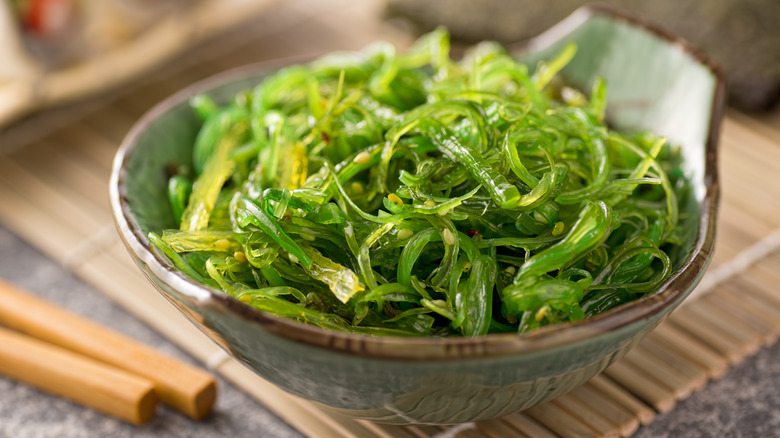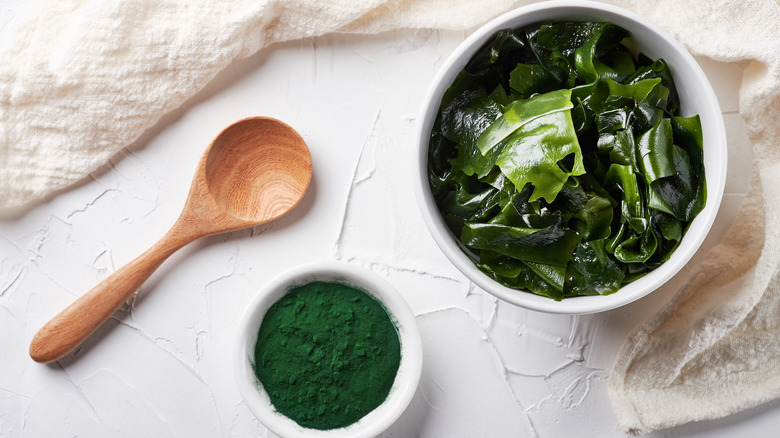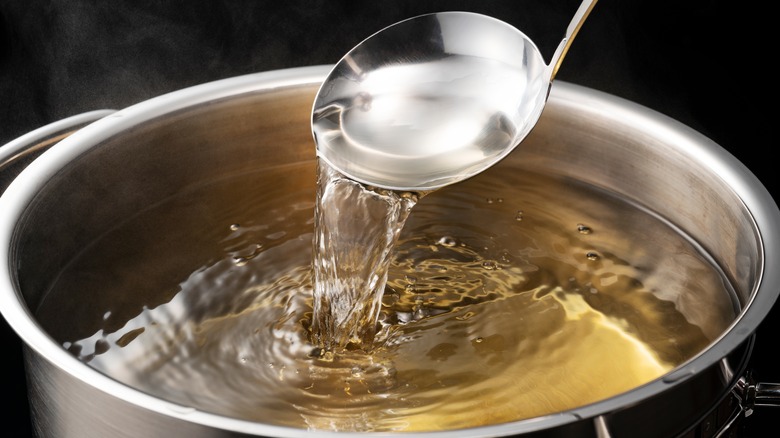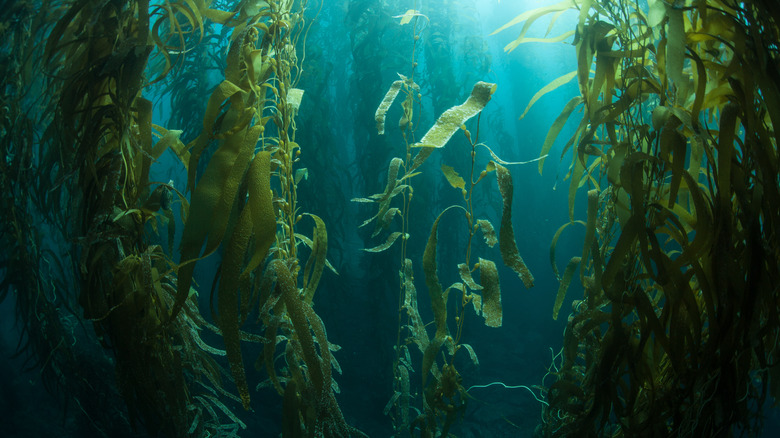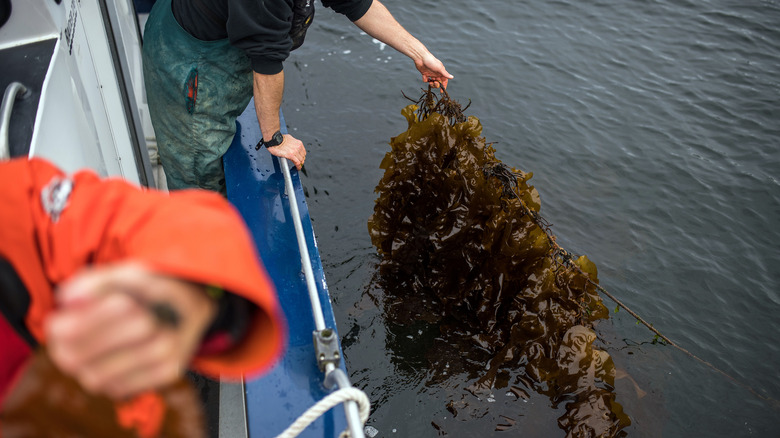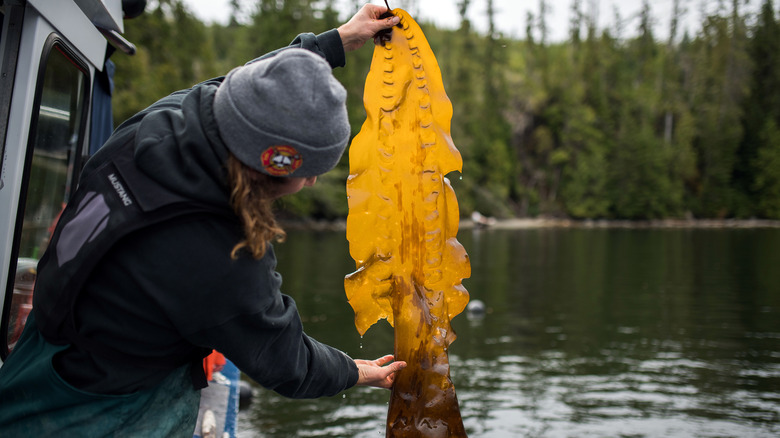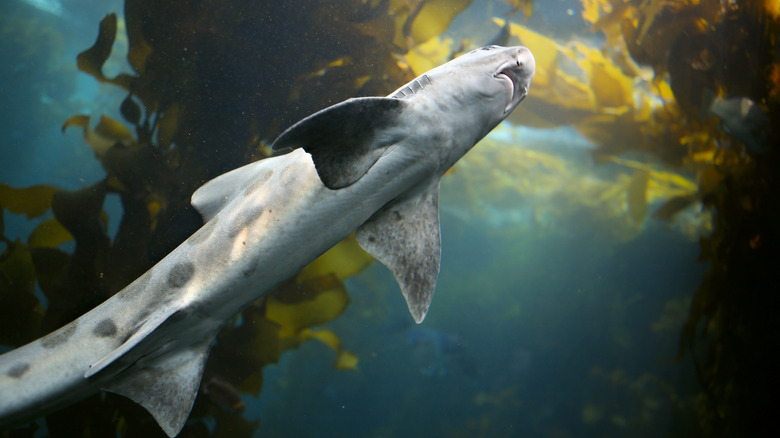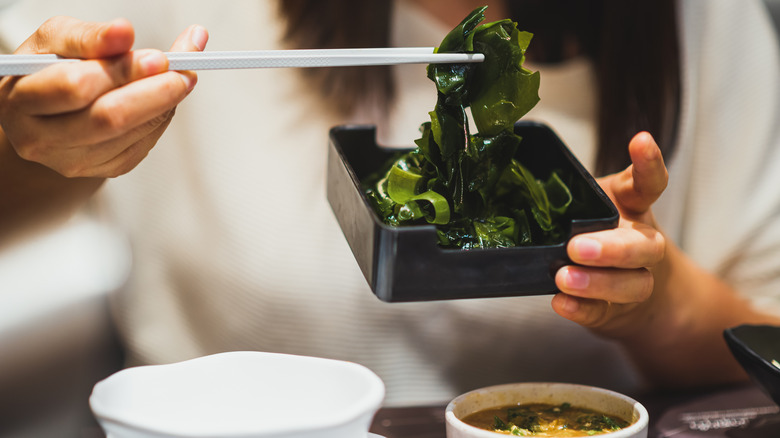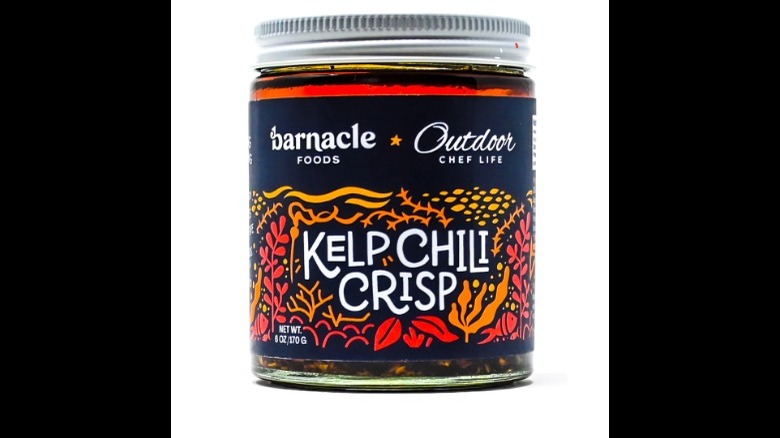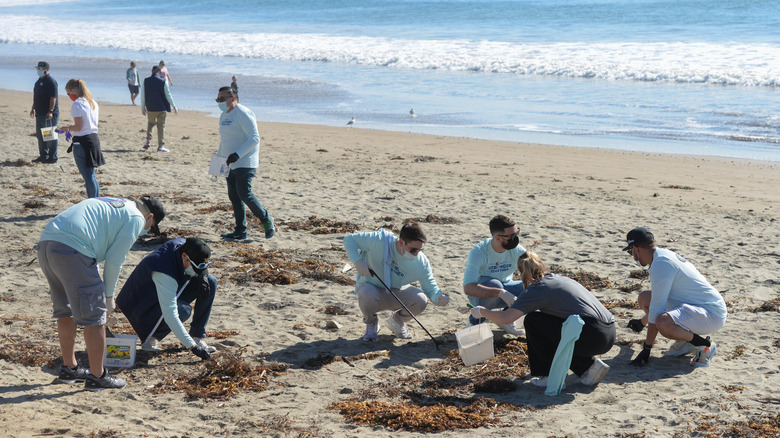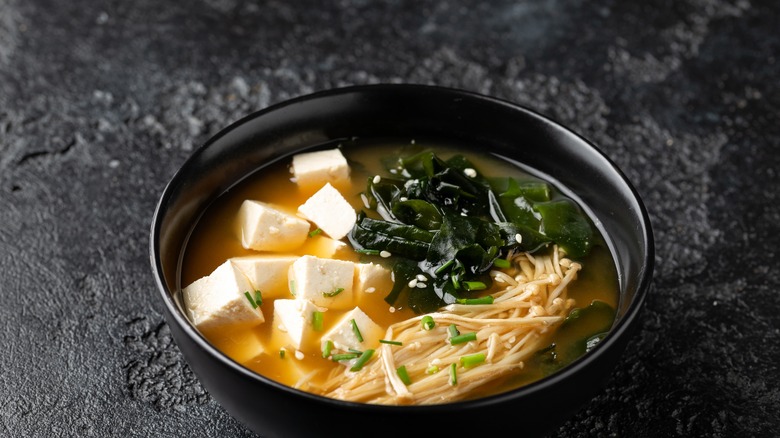12 Reasons You Should Be Eating More Kelp
How many times has someone tried to claim something as a miracle diet food? When something seems too good to be true, it often is, but what if there is a food that deserves its lofty reputation? Perhaps it's even overlooked.
Kelp is no ordinary diet food. It isn't even fair to classify it as such. Seaweed is an underrated superfood that we should consume more often, and kelp is among that classification. Kelp ... seaweed ... what's the difference? Essentially, all kelp is seaweed, but not all seaweed is kelp (although the two terms are commonly used interchangeably). There are many types of seaweed, but we are talking about the brown algae from the Laminariacae family.
This superfood from the sea has many opportunities to benefit our bodies and the planet. These are just some of the biggest reasons why you should be eating more kelp. You'll be running to incorporate more algae into your diet in no time).
1. It's packed full of nutrients
Kelp is a plant-based superfood containing over two dozen vitamins and minerals. The minerals in seaweed are ten times the amount in soil-grown plants. Watch out, kale! You've got some serious competition.
Scientists are still studying the extent to which health claims can be made about eating seaweed, but there is no doubt this plant boasts many nutritional benefits. Kelp is a low-calorie food while still managing to be a good source of carbohydrates, protein, fiber, and iron. It's rare for a single food to fulfill so many needs.
A 100-gram serving of raw kelp will also give you 55% of the daily recommended value of vitamin K1, 45% for folate, 29% for magnesium, 16% for iron, 13% for vitamin A, 13% for pantothenic acid (vitamin B5), and 13% for calcium. Each of these nutrients is essential for different bodily functions. Calcium is easily associated with bone health, but some of the others are not as well known. Pantothenic acid, for example, helps turn carbohydrates into energy to fuel your body, per the National Institute of Health. That's a mighty punch of nutritional benefits from eating just one serving of a plant.
2. Kelp is great for your gut
The word bacteria probably doesn't elicit endearing thoughts for many people. Bacteria cause diseases and other negative effects that range from unpleasant to deadly. Yet, these microorganisms can have beneficial properties. In fact, you need some of it to exist in your gut. This "good" bacteria can help aid with digestion as well as support other body systems (via NIH).
So what does all this talk of bacteria have to do with kelp? Turns out that eating this vegetable can help support a healthy gut microbiome. Seaweed, kelp included, has natural prebiotic properties that encourage the growth of "good" bacteria. Prebiotics are the non-digestible parts of plants that work to feed the probiotic bacteria in your gut. Our bodies can't break down prebiotic matter without the presence of healthy bacteria in our gut, so prebiotics and probiotics have a mutually beneficial relationship. Research Features reports that a team of scientific researchers at SeaHealth has been studying kelp's impact on gut health. Their studies show an increase in healthy gut bacteria after the consumption of seaweed, but also diversity in the types of bacteria in the microbiome.
Kelp is naturally high in prebiotic properties, but it can also be fermented and transformed into products with a prolonged shelf life as a result. Atlantic Sea Farms' Sea-Chi (their take on kimchi) is one example. In this format, eating kelp will also be a great source of probiotics, so you are getting double the benefits for your stomach.
3. It's a good source of iodine
Before salt manufacturers started adding iodine to table salt in the 1920s, iodine deficiency was a widespread concern (via NIH). UNICEF reports that 89% of people worldwide now consume iodized salt, but it is not the only way to consume this mineral. Because it absorbs nutrients naturally present in the ocean's water, kelp is a great dietary source of iodine.
While you might not give it much thought, a deficiency in iodine can have disastrous effects on your thyroid, the organ that regulates the hormones for metabolic functioning. People at particular risk of iodine deficiency are pregnant women, those who do consume iodized salt, and those who follow vegan or plant-based diets. Especially if you fall into any of these categories, kelp can be an excellent way to help prevent hypothyroidism (when the thyroid produces too few hormones, which can disrupt your metabolism).
With iodine, there is such a thing as too much. The same negative effects on your thyroid can occur when you consume too much iodine. The iodine content in seaweed products varies wildly from 128 micrograms to 62,400 micrograms, according to a 2021 study published in Food & Nutrition Research. This study supports that regularly eating certain products (especially dried seaweed) could result in exceeding the tolerable upper intake level for adults, so caution may be advised before adding kelp regularly into your diet.
4. Kelp is high in antioxidants
According to Healthline, kelp contains several compounds that have been known for antioxidant properties. These include fucoidan, fucoxanthin, astaxanthin, and phlorotannin, which may promote heart health. These compounds may help protect you against cardiovascular disease. Additionally, kelp contains, EPA, a type of omega-3 fatty acid most commonly associated with fatty fish like salmon. When you consume kelp, these fatty acids can help boost your good cholesterol.
This ocean plant also contains carotenoids and flavonoids, which may help fight other types of diseases, boost brain health, and even slow the growth of some cancers, per Healthline. However, be aware that the actual health claims of antioxidants like carotenoids and flavonoids are still being studied. There is no evidence to suggest that eating kelp could help prevent the development of cancer, while it may lead to a slower progression.
5. Kelp is a zero input crop
What does it mean to be a "zero input" crop? No, you can't magically make food appear out of thin air. Zero input agriculture is a farming practice aimed at minimizing inputs required to produce (especially high-yield) crops. Kelp is an excellent example of a "zero input" crop. Kelp aquaculture requires no arable land. It takes place in the ocean. There are no fertilizers or pesticides used, and you never have to water your growing stalks. Imagine farming a crop you don't have to water.
There are some key benefits of pursuing this farming method. Requiring very few resources, it is cheap, especially relative to the inputs required to grow leafy greens on land. Kelp is also a fast-growing crop and it produces a high yield. The Alaska Department of Fish and Game reports that just five adult kelp plants can spore an entire 100-acre kelp farm and produce anywhere from half a million to a million pounds of kelp. This plant can grow up to 18 inches per day, so under the best circumstances, kelp farms can expect to quickly bring to market a nutritionally-dense crop with minimal environmental impact.
6. Kelp farming is regenerative
Zero input agriculture aims to minimize the ecological impact of producing a crop, but in regenerative agriculture, the goalpost is even further. This farming approach tries to create a net positive impact on the environment, at best even reversing the effects of climate change. If you are interested in pursuing a regenivore diet, kelp should be on your plate.
The world's oceans absorb 90% of excess greenhouse gas emissions and 30% of atmospheric carbon dioxide. With excess heat being released into the sea, ocean temperatures are climbing each year resulting in sea levels rising and climate patterns drastically altering. Kelp farming has the potential to reverse the effects of climate change by de-acidifying the ocean. This sea-biding plant absorbs excess CO2 and nitrogen, removing them from the water. Not only does kelp farming require very few resources, but it can also leave the ocean cleaner.
7. You can support the lobster industry
Kelp isn't just good for the environment — it's also helping to sustain local communities that have been impacted by climate change. In what may come as a surprise, kelp farming has provided Maine lobster fishers (among other sectors of the seafood industry) an opportunity to diversify their income, as reported by The Washington Post.
Coastal Maine is heavily dependent on the lobster fishery for economic vitality. However, the Gulf of Maine (which runs from Cape Cod to Nova Scotia) is the fastest-warming area of the world's ocean territory. Warming oceans means lobsters migrate further north or they might face disruptions in molting or develop shell diseases. This is what killed the lobster industry in lower New England and why you rarely find lobster from Massachusetts anymore. Industry members worry the Maine lobster fishery is at risk of the same fate if climate change is not curtailed.
Lobster fishers may not seem like the most obvious candidates for kelp farmers, but this aquaculture is predictable, scalable, and draws on existing knowledge of the ocean environment. The growing season is in the winter which is the off-season for lobster fishing. Lobster fishers are seeing the power that kelp has to help get them through tough fishing seasons, and they have a vested interest in slowing the effects of climate change to help sustain their generations-long industry.
8. More kelp can relieve pressure on wild fish species
Farming this sea green isn't just good for lobsters. Kelp can provide much-needed relief from the pressure on wild fish species. Despite extensive regulations, overfishing is still a concern in the seafood industry. Some of the most popular fish like bluefin tuna and Atlantic cod have been "red listed" by several environmental groups, such as Greenpeace, for being overfished. However, global demand for seafood continues to rise every year. If you are looking to the sea as a way to eat less meat, incorporating kelp into the mix will allow you the best of both worlds. You can reduce your land-based animal protein intake but also minimize the impact on ocean life.
Kelp also has a symbiotic relationship with many other sea-dwelling creatures, and it is an important part of the ocean's food chain. A large variety of fish, shellfish, snails, and more take shelter in kelp forests for protection or use it as a source of food. Larger fish will eat those kelp inhabitants, and some of those might even end up on your plate, such as rockfish. Grey whales have even been known to hang around kelp forests as a way to hide from killer whales, their natural predators. The more kelp grown, the more balance can be restored in the oceanic ecosystems.
9. It's a great meat substitute
Following plant-based diets can make it tough to get all the essential nutrients your body needs to function, but this humble seaweed is here for the assist. Kelp makes a great meat substitute for so many reasons. In addition to the environmental benefits, this sea plant fulfills so many dietary functions.
Despite being low in calories, kelp provides a significant source of carbohydrates, including soluble fiber. Kelp is not as high in protein as some other seaweeds, but you can still get 5 grams in a single-ounce serving of dried kelp, such as kombu. It should be supplemented with other protein-rich foods to support a balanced diet, but one of the reasons kelp makes such a great meat alternative is its unique nutritional content.
We've already mentioned that kelp is a great way for people following plant-based diets to ensure they get enough iodine, but it's also a great source of iron, which can help prevent anemia. Beef is a rich source of iron, but alternatives containing seaweed, such as Akua's kelp burger can be a great way to cut back on red meat without losing that essential mineral.
10. Versatility might be its best quality
What can you do with kelp? The better question might be: What can't you do with kelp? You can use it pretty much in any way you might cook with kale, cabbage, or other greens from that family. Kelp is good for soups, stews, stir-fries, salads, and so much more. You could even take a stab at using kelp powder to pack some extra nutrients into homemade pasta.
While there are many ways to incorporate kelp into your own cooking, some companies have taken out some of the work by creating ready-to-cook or eat products using kelp. Seaweed cannot keep fresh as long as land-grown greens. It has a shelf life in the fridge of three to four days, making preservation key in making use of this vegetable. An Alaskan company, Barnacle Foods, has turned their Pacific-grown kelp into imaginative creations including chili crisp, pickles, hot sauce, seasoning blends, salsa, BBQ sauce, and even adding it into chocolate bars. Their products are all shelf-stable and make interesting use of locally-grown kelp.
Other companies, like Atlantic Sea Farms, have gone a more traditional route providing refrigerated and frozen products, such as their fermented seaweed salads, kelp burgers, and kelp cubes. With blueberry kelp cubes, you can make the superfood smoothie of your dreams.
11. Kelp can help feed the world
As a "zero input" crop, kelp requires few resources. Plus, it grows fast and in large quantities. If scaled up, kelp could be a key player in fighting global food insecurity. Under the Sustainable Development Goals, the United Nations aims to see zero hunger globally by 2030. This is goal number two, and scaling up kelp production could contribute significantly to this goal. This sea green is nutritionally dense. A lot of key vitamins and minerals (that people experiencing malnourishment often lack) as well as energy to function are packed into a small amount of food.
Kelp also has a role to play in several other SDGs, including good health and well-being, responsible consumption and production, climate action, and life below water. It's almost like this superfood has superpowers. Of course, it isn't that easy. It will take time, energy, and investment to transform kelp into the crop of the future, but current trends are making industry experts feel hopeful about its potential.
12. No matter how you eat it or prepare it, kelp is delicious
Above all else, kelp is delicious. If all the reasons listed above don't convince you to eat more of this seaweed, what if we told you it also tasted good? Kelp has an earthy, vegetal flavor, so you might find it reminiscent of kale. It's fibrous, but you'll enjoy a soft, chewy texture that is a little gentler on the jaw than raw kale. Kelp can have a slightly bitter flavor much like many other leafy greens.
However, there is also a natural sweetness and salinity that land-grown greens tend to lack. Kale and other members of the cabbage family fall more on the bitter side of the taste spectrum. Kelp is rich in umami, that mysterious fifth taste that evokes the hard-to-describe savory flavor that comes from glutamic acid or glutamate.
Fresh kelp is fairly mild in flavor. It will have that subtle ocean-like brine you might expect in mollusks like oysters or scallops. However, be mindful of dried kelp, which will have more concentrated characteristics. Kombu (dried brown kelp) is saltier and more fibrous than fresh kelp, which is why it is typically rehydrated before consumption, or most traditionally in Japanese cuisine steeped in liquid with bonito flakes to form a broth called dashi. The rich umami in bonito complements kelp's own savoriness. Dashi is the basis for many Japanese dishes, including miso soup, which has that seaweed flavor enhanced with the presence of additional rehydrated kelp.
